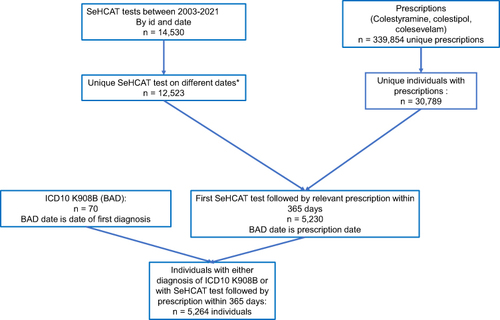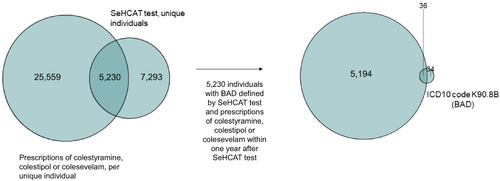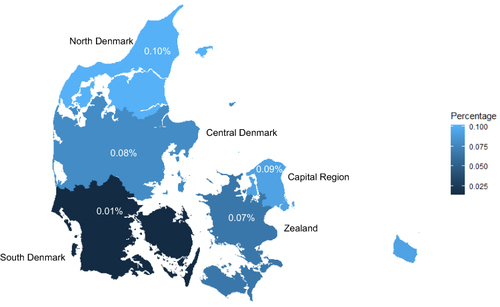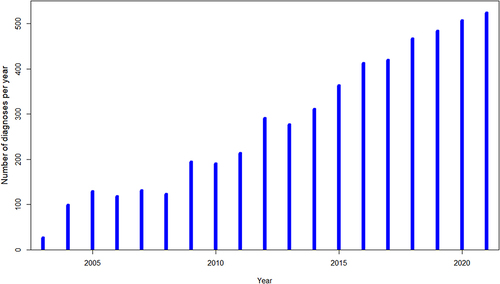Figures & data
Figure 1 Flowchart of the selection process of the bile acid diarrhea (BAD) population.

Figure 2 Bile acid diarrhea (BAD) population defined as a SeHCAT test followed by a bile acid sequestrant prescription within one year after SeHCAT test (left side) and the overlap between this definition and the ICD10 code K90.8B (BAD) (right side).

Figure 3 Percentage of individuals with bile acid diarrhea (BAD) in each region in Denmark, as a percentage of total number of individuals living in the region during the study period 2003–2021. BAD was defined by a diagnosis of ICD10 code K90.8B or a SeHCAT test followed by a prescription of bile acid sequestrant within 365 days.

Table 1 Characteristics of Bile Acid Diarrhea (BAD) Population (Defined by a Diagnosis of ICD10 Code K90.8B or a SeHCAT Test Followed by a Prescription of Colestyramine, Colestipol, or Colesevelam Within 365 Days) and Their Age- and Sex-Matched Controls (Matched 1:10)
Figure 4 Number of unique prescriptions of colestyramine (A), colestipol (B), colesevelam (C), and SeHCAT tests (D) per year during the study period. Prescriptions are not unique per person, SeHCAT tests are unique per person and date.

Figure 5 Unique individual diagnoses with bile acid diarrhea (BAD) defined by a diagnosis with ICD10 code K90.8B or a SeHCAT test followed by a prescription of bile acid sequestrant within 365 days.

